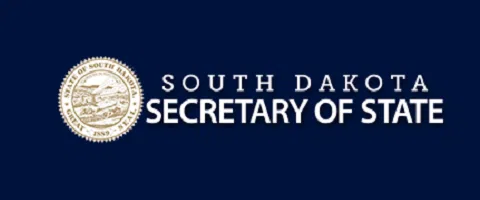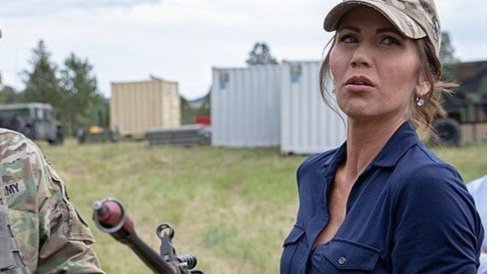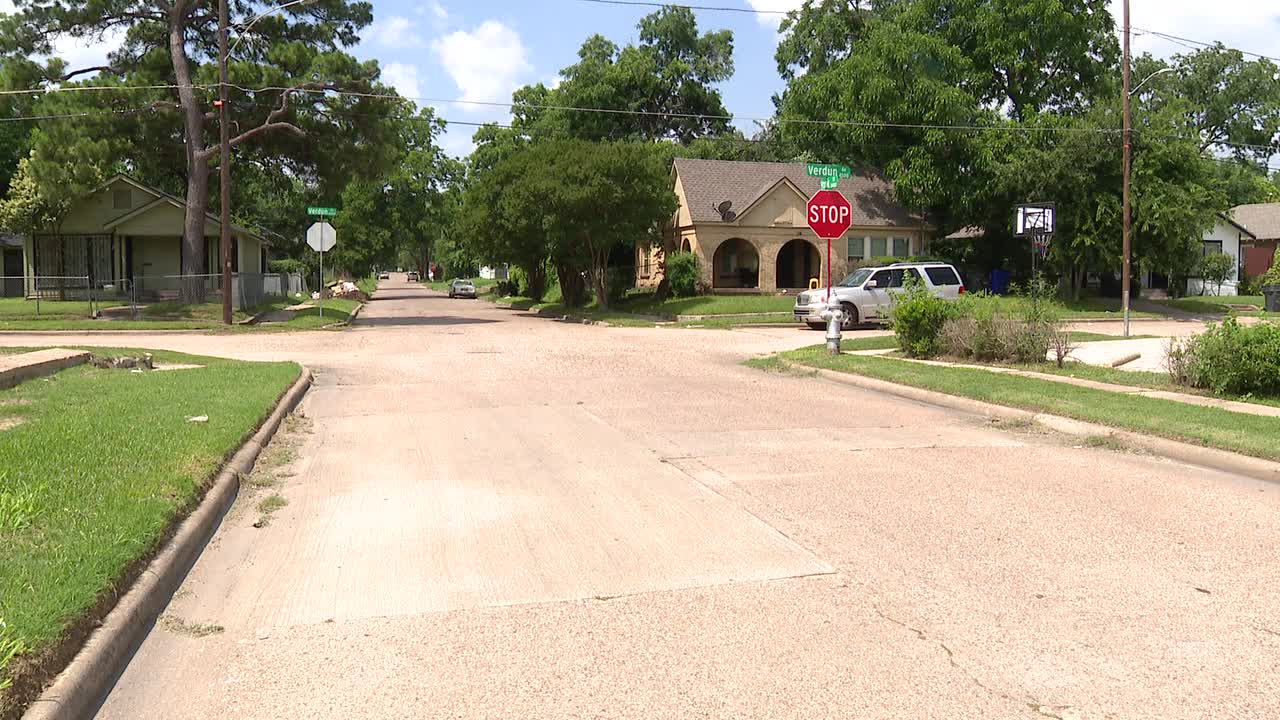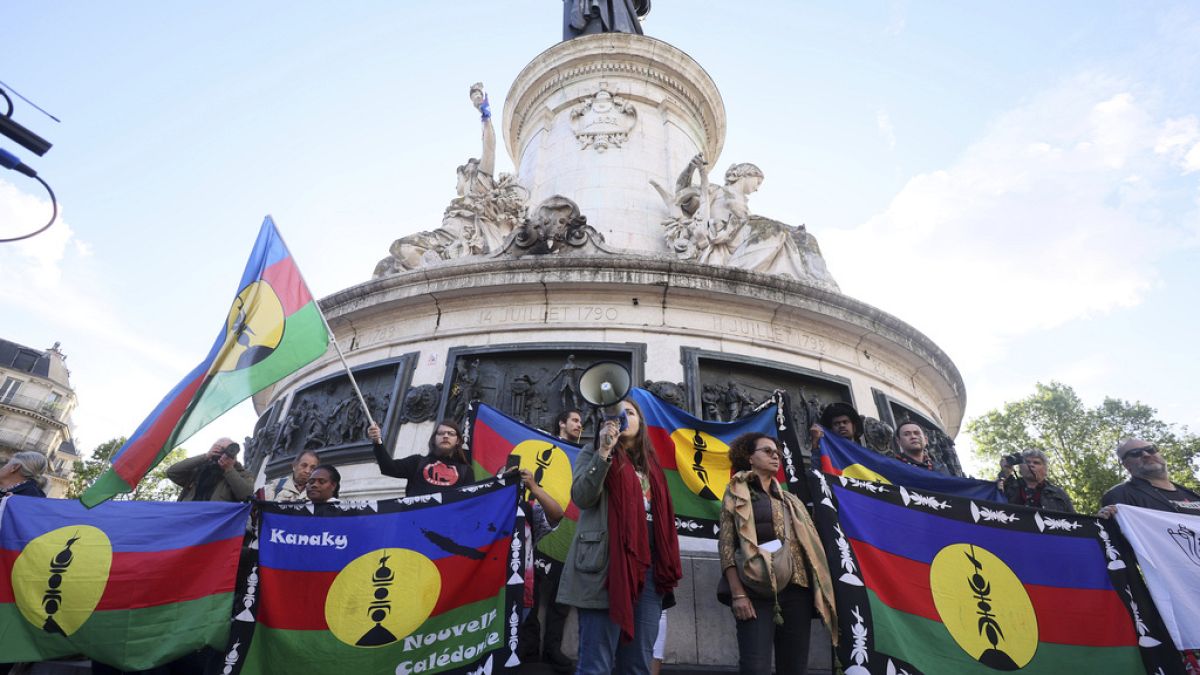South Dakota
Signatures to put initiated measure legalizing recreational marijuana use in South Dakota submitted to Secretary of State’s Office

MAY 7, 2024:
Secretary of State Monae L. Johnson’s office received petitions this afternoon for an initiated measure legalizing the recreational use, possession, and distribution of marijuana. If validated and certified, the ballot question will appear on the general election ballot on November 5, 2024. The deadline to submit ballot question petitions to the Secretary of State is Tuesday, May 7, at 5:00 p.m. central time.
Petitions will be reviewed by the Secretary of State’s office in the order in which they were received. Below is a chart indicating the order of submission:
In order to qualify to be placed on the 2024 general election ballot, an Initiated Measure requires 17,508 valid signatures and a Constitutional Amendment requires 35,017 valid signatures. As outlined in South Dakota Codified Law 2-1-16 and 2-1-17, the Secretary of State’s office will now conduct a random sampling of the petition signatures to determine the validity.
Ballot measures submitted to the Secretary of State’s office previously had a deadline for submission which was one year out from the general election. After a law change in 2023, ballot measure petitions have until the first Tuesday in May to file. The Secretary of State’s office has until August 13, 2024, to finish validating petitions.
Individuals who wish to have their name withdrawn from a ballot measure petition must submit written notification to the Secretary of State’s office any time before the petition from which the individual is submitting is filed and certified for placement on the general election ballot.
MAY 6, 2024:
Secretary of State Monae L. Johnson’s office received petitions Monday afternoon (May 6, 2024) for an initiated amendment to the South Dakota Constitution establishing top-two primary elections. If validated and certified, the ballot question will appear on the general election ballot on November 5, 2024. The deadline to submit ballot question petitions to the Secretary of State is Tuesday, May 7, at 5:00 p.m. central time.
Petitions will be reviewed by the Secretary of State’s office in the order in which they were received. Below is a chart indicating the order of submission:

In order to qualify to be placed on the 2024 general election ballot, an Initiated Measure requires 17,508 valid signatures and a Constitutional Amendment requires 35,017 valid signatures. As outlined in South Dakota Codified Law 2-1-16 and 2-1-17, the Secretary of State’s office will now conduct a random sampling of the petition signatures to determine the validity.
Ballot measures submitted to the Secretary of State’s office previously had a deadline for submission which was one year out from the general election. After a law change in 2023, ballot measure petitions have until the first Tuesday in May to file.
Individuals who wish to have their name withdrawn from a ballot measure petition must submit written notification to the Secretary of State’s office any time before the petition from which the individual is submitting is filed and certified for placement on the general election ballot.
UNDATED (AP)- Supporters of a “top two” primary election system in South Dakota that would replace the current partisan process with one open to all voters have submitted thousands more petition signatures than required to bring a vote this fall on their ballot initiative.
On Monday (May 6, 2024), South Dakota Open Primaries sponsors said they submitted petitions with 47,000 signatures to Secretary of State Monae Johnson’s office. The measure group needs 35,017 valid signatures to make the November ballot. Johnson’s office has until Aug. 13 to validate the measure, a proposed constitutional amendment.
Under South Dakota’s current primary election system, candidates in gubernatorial, congressional, legislative and county races compete in a partisan primary. The measure would allow all candidates to compete against each other in one primary, and the top two vote-getters in each race or for each seat would advance to the general election. A similar measure failed in 2016.
Other states such as California and Washington have “top two” primary elections similar to the measure proposed in South Dakota.
Measure sponsor Deanna “De” Knudson, a registered Republican, said she doesn’t think the state has a fair system, in that it “excludes about half of the voters from the real race, and we just really believe that this is a fairness issue.”
Republicans control South Dakota’s Legislature and hold all statewide elected offices and congressional seats. Democrats haven’t won a statewide election since 2008, when former U.S. Sen. Tim Johnson and U.S. Rep. Stephanie Herseth Sandlin won reelection to their last terms.
South Dakota has nearly 602,000 registered voters, including 304,000 Republicans and 144,000 Democrats, but people registered as “no party affiliation” or “independent” total nearly 150,000 voters, according to online voter registration tracking.
State Republican Party Chairman and state Sen. John Wiik said he vehemently opposes the measure. He said he sees “no good coming out of it for the Republican Party.” The state GOP’s central committee unanimously opposed the measure, he said.
“I want Republicans to be able to choose the Republican candidate, and Democrats to choose the Democrat candidate,” Wiik said. “If you want to be an independent, then you’re independent of the decisions that affect your lives.”
Knudson said the measure would bring a much more competitive process and “will make sure that the winning candidate is the one most South Dakotans agree on.” She questioned the balance of power in the Legislature, where Democrats hold 11 of 105 seats, and whether that is truly reflective of voters’ will.
State Democratic Party Executive Director Dan Ahlers said the party hasn’t taken a stance on the measure. The Democratic Party allows “no party affiliation” and independent voters to vote in its primary, along with registered Democrats.
MAY 2, 2024:
The South Dakota Secretary of State’s Office has received petitions (May 1, 2024) for an initiated amendment establishing a right to abortion in the state constitution. If validated and certified, the ballot question will appear on the general election ballot on November 5, 2024. The deadline to submit ballot question petitions to the Secretary of State is Tuesday (May 7, 2024) at 5:00pm Central Time.
Petitions will be reviewed by the Secretary of State’s office in the order in which they were received. Below is a chart indicating the order of submission:

In order to qualify to be placed on the 2024 general election ballot, an Initiated Measure requires 17,508 valid signatures and a Constitutional Amendment requires 35,017 valid signatures. As outlined in South Dakota Codified Law 2-1-16 and 2-1-17, the Secretary of State’s office will now conduct a random sampling of the petition signatures to determine the validity.
Ballot measures submitted to the Secretary of State’s office previously had a deadline for submission which was one year out from the general election. After a law change in 2023, ballot measure petitions have until the first Tuesday in May to file.
Individuals who wish to have their name withdrawn from a ballot measure petition must submit written notification to the Secretary of State’s office any time before the petition from which the individual is submitting is filed and certified for placement on the general election ballot.
APRIL 25, 2024:
Secretary of State Monae L. Johnson’s office received petitions for a ballot question Wednesday (April 24, 2024). If validated and certified, the ballot question will appear on the general election ballot on November 5, 2024.
Individuals who wish to have to have their name withdrawn from a ballot measure petition must submit written notification to the Secretary of State’s office any time before the petition from which the individual is submitting is filed and certified for placement on the general election ballot.
In order to qualify to be placed on the 2024 general election ballot, an Initiated Measure requires 17,508 valid signatures and a Constitutional Amendment requires 35,017 valid signatures. As outlined in South Dakota Codified Law 2-1-16 and 2-1-17, the Secretary of State’s office will now conduct a random sampling of the petition signatures to determine the validity.
The deadline to submit ballot question petitions to the Secretary of State is May 7, at 5:00 p.m. central time.
Ballot measures submitted to the Secretary of State’s office previously had a deadline for submission which was one year out from the general election. After a law change in 2023, ballot measure petitions have until the first Tuesday in May to file. Ballot measures will be a top priority for the Secretary of State’s office, along with assisting voters and county auditors with absentee voting and questions for the June 4, 2024, Primary Election.

South Dakota
Survey says nearly two-thirds of SD educators use Indigenous standards • South Dakota Searchlight

Survey results indicate nearly two-thirds of South Dakota public school educators are teaching the Oceti Sakowin Essential Understandings, but the number of respondents is lower than the last survey.
The essential understandings are a set of standards approved in 2018 for teaching students about Native American culture and history. “Oceti Sakowin” is the collective term for Lakota, Dakota and Nakota speaking Native Americans, many of whom live in South Dakota. There are nine tribal nations within the state.
About 62% of teachers are using the standards, based on a survey conducted by the state Department of Education in 2023 — a “remarkable increase” from 45% in 2021, said Fred Osborn, director of the Office of Indian Education, which is under the supervision of the state Department of Tribal Relations. He presented the survey results to the Indian Education Advisory Council earlier this month.
Use of the standards is optional. The survey is used to understand how the standards are being implemented, and to help state officials encourage statewide adoption.
“The key is there’s improvement,” Osborn said. “It’s not perfect yet. There’s still work to be done, but we’ve come a long way from 45% of teachers. We hope that increases every year.”
Osborn added that the Office of Indian Education provided 10,000 copies of books on the Oceti Sakowin Essential Understandings through a Bush Foundation grant since the first survey, and sent out education packets for all grade levels last fall.
Fewer survey responses
Only about 385 educators took part in the 2023 survey, compared to 554 in 2021.
The 2023 survey also does not list how many public school districts were represented in the survey, whereas 2021’s survey had responses from 125 of the state’s 149 school districts. The school district identification question was changed between 2021 and 2023, said department spokesperson Nancy Van Der Weide. The department does not have any data to determine how many school districts were represented in the latest survey.
Removing the school district identification question allowed participants more anonymity, Van Der Weide told South Dakota Searchlight.
Navajo leaders outraged after a Lakota student’s tribal regalia was removed at graduation
Neither Osborn nor any members of the council addressed the potential impact of fewer responses on the validity of the survey results. The survey was voluntary and available for one month, Van Der Weide said, with a notice placed in a newsletter sent to teachers throughout the state.
“Those educators who did respond provided informed recommendations,” Van Der Weide said in an emailed statement. “Some of those were educators who already incorporate a lot of OSEUs in their classrooms, while others were those who wanted to make them a part of their instruction and responded with ideas for tools that would help them to incorporate the standards into their classrooms.”
Advisory council member Sherry Johnson, tribal education director for the Sisseton Wahpeton Oyate, helped shaped the standards and is participating in the standards update. She doubts the survey is an accurate representation of how the standards are being used in the state.
“We have pockets of the state that are doing well, but it’s not pervasive. It’s not required,” Johnson said. “If nothing else, there should be direct teacher training and a mandate to have this Indian education for all.”
Megan Deal, a second-grade teacher in Pierre and a member of the advisory council, said her school participated in a pilot program to help create lesson plans for standards at each grade level, but not all teachers incorporated the teachings into their classrooms.
“I don’t think they’re being taught at very many schools around the state at this time,” Deal said.
Council member Brian Wagner, tribal education director with the Lower Brule Sioux Tribe, said he is concerned about the lack of “teeth” with the standards. Lawmakers have introduced bills to require use of the Oceti Sakowin Essential Understandings in classrooms, but those efforts have failed in the Legislature.
“Knowledge is power,” Wagner said. “If people don’t learn about history, then we risk repeating it, and unfortunately the history repeating would be the racism and the discrimination that many tribal members have experienced because people don’t understand tribal sovereignty or the treaties and the treaty rights.”
Impact expected from social studies standards
Though the standards are optional, said Secretary of South Dakota Department of Education Joseph Graves, the new social studies standards that will be implemented by 2025 will include references to the Oceti Sakowin Essential Understandings. Those will encourage more teachers to use the cultural standards, he said.
“We’re going to find more Native American history and culture being taught in the schools than ever before,” Graves said. “This is actually a move forward, not a move back. I think the social studies standards have gotten an unfair black eye, and I think once you see these in place you’ll find we’re teaching more of it rather than less and, I think, from an enlightened perspective.”
States were adding lessons about Native American history. Then came the anti-CRT movement
The social studies standards controversy started in 2021 because the department removed more than a dozen references to the Oceti Sakowin from a committee’s draft revision of social studies standards. After Gov. Kristi Noem formed a new work group and ordered the process to start over, the group produced standards that drew criticism for an emphasis on rote memorization over inquiry-based learning.
Graves added that the department plans to provide teachers with weekly materials to help them utilize the social studies standards and encourage them to use the Oceti Sakowin Essential Understandings.
According to the 2023 survey results, about 84% of educators said they were aware of the standards, and 77% said it is important to implement the standards in every classroom. Only 55% of teachers said they knew the concepts well enough to teach them, but that was an 18 point increase from 2021.
Nearly 40 administrators took part in their administrator survey in 2023, compared to 164 in 2021. The 2023 survey does not list how many public school districts were represented in the administrator survey.
Nearly 80% of administrators said it’s important to implement the standards in every classroom, but two-thirds of administrators indicated a lack of confidence to implement the standards in their schools, while 56% reported an uncertainty about how to integrate the standards and 44% cited a concern for the appropriateness of the content — an increase of 28 points from the 2021 survey.
The survey does not address how using the standards affects Native American student achievement, but Osborn said it would be “interesting to cross analyze” that.
GET THE MORNING HEADLINES DELIVERED TO YOUR INBOX
South Dakota
Noem’s trip to the border a distraction from real South Dakota problems, says SDDP chair Dan Ahlers — The South Dakota Standard

Gov. Kristi Noem once again delivered a fearmongering speech about the U.S.-Mexico border instead of finding solutions for problems in South Dakota.
Noem continues to claim that cartels are operating on reservations for drug and human trafficking. When questioned, she acknowledges drugs and human trafficking are happening throughout South Dakota and this country. So why is she only focusing on the tribes?
South Dakota should be working with tribal leadership and providing more resources for drug prevention and rehabilitation programs as well as organizations that help victims of human trafficking.
The governor also said tribal leaders need to “stop focusing on politics and banishing me and bring me solutions.” That is a two-way street. Noem has a long history of showing disrespect for Native Tribes in South Dakota. Her administration needs to put in the work to improve relationships with each of the Tribal Nations. Good leadership doesn’t hurl attacks; it finds solutions.
South Dakotans should be encouraged by the new basic law enforcement certification course for tribal police recruits this summer. This is a step in the right direction in the hope of more law enforcement officers on reservations to help with the public safety issues.
Noem (seen above in public domain photo on a 2019 visit to American troops posted in wikimedia commons) also continues to allege that there is an “infiltration” and “invasion” at the southern border. If she truly wanted to find a solution to the border crisis, she would have urged US Senators John Thune and Mike Rounds as well as US Representative Dusty Johnson to support the bipartisan immigration bill. While it was not perfect, it addressed concerns by both political parties. Instead, they all fell in line with former President Donald Trump and killed real, meaningful immigration reform.
The only purpose for this news conference is to distract from the bad press she’s receiving nationally due to stories of killing her dog and inaccuracies in her book like meeting North Korean leader Kim Jong Un. The focus should be on the real challenges of South Dakota families.
Many families across the state can’t afford child care. Families sit on waiting lists because there are not enough daycare employees and providers. South Dakota is also dealing with a shortage of affordable and workforce housing. Meanwhile, the Governor recruits people from places like California who are driving up the cost of housing and our property taxes. And while Gov. Noem is vilifying people who are crossing the southern border, South Dakota is actually in need of migrants to fix our labor shortage.
Noem continues to show that she is more concerned about her national image than effectively governing South Dakota.
Dan Ahlers of Dell Rapids is the chairman of the South Dakota Democratic Party. Contact him at dan@sddp.org or contact the state party office by phone at 605-271-5405 or 605-940-3071.
South Dakota
Abortion rights initiatives make the ballot in South Dakota and Colorado

(AP) – Voters in Colorado and South Dakota will have a say on abortion rights this fall after enough signatures were collected to put measures on the ballots.
South Dakota voters will get a chance at direct democracy on the contentious issue in a conservative state where a trigger law banning nearly all abortions went into effect after Roe v. Wade was overturned.
Colorado’s measure, which made the ballot Friday, would enshrine abortion protections into the state constitution. Colorado already has broad protections for abortion, becoming a haven for those in states that have restricted abortion, particularly Texas.
South Dakota’s top election official announced Thursday that about 85% of the more than 55,000 signatures submitted in support of the ballot initiative are valid, exceeding the required 35,017 signatures.
Voters will vote up or down on prohibiting the state from regulating abortion before the end of the first trimester and allowing the state to regulate abortion after the second trimester, except when necessary to preserve the life or physical or emotional health of a pregnant woman.
Dakotans for Health, which sponsored the amendment, said in a statement Thursday that the signatures’ validation “certified that the people of South Dakota, not the politicians in Pierre, will be the ones to decide whether to restore Roe v. Wade as the law of South Dakota.”
Abortion rights are also on the ballot in Florida and Maryland, and advocates are still working toward that goal in states including Arizona, Montana and Nebraska in the aftermath of the U.S. Supreme Court’s 2022 reversal of Roe.
Voters of seven other states have already approved abortion access in ballot measures, including four that wrote abortion rights into their constitutions.
Supporters for Colorado’s ballot measure said they turned in over 225,000 signatures, nearly double the required number of just over 124,000. Amending the state constitution will require the support of 55% of voters.
“In this time of uncertainty, we need to secure abortion rights and access in the Colorado Constitution, beyond the reach of politics and politicians,” Karen Middleton, president of Cobalt Abortion Fund based in Colorado, said in a statement Friday.
South Dakota outlaws all abortions, except to save the life of the mother.
Despite securing language on the ballot, abortion rights advocates in South Dakota face an uphill battle to success in November. Republican lawmakers strongly oppose the measure, and a major abortion rights advocate has said it doesn’t support it.
The American Civil Liberties Union of South Dakota warned when the signatures were submitted that the language as written doesn’t convey the strongest legal standard for courts to evaluate abortion laws and could risk being symbolic only.
Life Defense Fund, a group organized against the initiative, said they will continue to research the signatures.
Opponents still have 30 days — until June 17 — to file a challenge with the secretary of state’s office.
“We are grateful to the many dedicated volunteers who have put in countless hours, and we are resolute in our mission to defend unborn babies,” co-chairs Leslee Unruh and state Rep. Jon Hansen said in a statement.
Copyright 2024 The Associated Press. All rights reserved.
-

 Politics1 week ago
Politics1 week agoFox News Politics: No calm after the Stormy
-

 World1 week ago
World1 week agoIndia Lok Sabha election 2024 Phase 4: Who votes and what’s at stake?
-

 News1 week ago
News1 week agoSkeletal remains found almost 40 years ago identified as woman who disappeared in 1968
-

 Politics1 week ago
Politics1 week agoUS Border Patrol agents come under fire in 'use of force' while working southern border
-

 Politics1 week ago
Politics1 week agoTales from the trail: The blue states Trump eyes to turn red in November
-

 World1 week ago
World1 week agoBorrell: Spain, Ireland and others could recognise Palestine on 21 May
-

 World1 week ago
World1 week agoCatalans vote in crucial regional election for the separatist movement
-

 World1 week ago
World1 week agoEurope matters to consumers, and so does your vote














